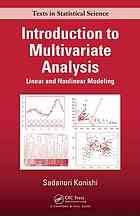

Most ebook files are in PDF format, so you can easily read them using various software such as Foxit Reader or directly on the Google Chrome browser.
Some ebook files are released by publishers in other formats such as .awz, .mobi, .epub, .fb2, etc. You may need to install specific software to read these formats on mobile/PC, such as Calibre.
Please read the tutorial at this link: https://ebookbell.com/faq
We offer FREE conversion to the popular formats you request; however, this may take some time. Therefore, right after payment, please email us, and we will try to provide the service as quickly as possible.
For some exceptional file formats or broken links (if any), please refrain from opening any disputes. Instead, email us first, and we will try to assist within a maximum of 6 hours.
EbookBell Team

4.4
32 reviews"The aim of statistical science is to develop the methodology and the theory for extracting useful information from data and for reasonable inference to elucidate phenomena with uncertainty in various fields of the natural and social sciences. The data contain information about the random phenomenon under consideration and the objective of statistical analysis is to express this information in an understandable form using statistical procedures. We also make inferences about the unknown aspects of random phenomena and seek an understanding of causal relationships. Multivariate analysis refers to techniques used to analyze data that arise from multiple variables between which there are some relationships. Multivariate analysis has been widely used for extracting useful information and patterns from multivariate data and for understanding the structure of random phenomena. Techniques would include regression, discriminant analysis, principal component analysis, clustering, etc., and are mainly based on the linearity of observed variables. In recent years, the wide availability of fast and inexpensive computers enables us to accumulate a huge amount of data with complex structure and/or high-dimensional data. Such data accumulation is also accelerated by the development and proliferation of electronic measurement and instrumentation technologies. Such data sets arise in various fields of science and industry, including bioinformatics, medicine, pharmaceuticals, systems engineering, pattern recognition, earth and environmental sciences, economics and marketing. "--
"The aim of statistical science is to develop the methodology and the theory for extracting useful information from data and for reasonable inference to elucidate phenomena with uncertainty in various fields of the natural and social sciences. The data contain information about the random phenomenon under consideration and the objective of statistical analysis is to express this information in an understandable form using statistical procedures. We also make inferences about the unknown aspects of random phenomena and seek an understanding of causal relationships. Multivariate analysis refers to techniques used to analyze data that arise from multiple variables between which there are some relationships. Multivariate analysis has been widely used for extracting useful information and patterns from multivariate data and for understanding the structure of random phenomena. Techniques would include regression, discriminant analysis, principal component analysis, clustering, etc., and are mainly based on the linearity of observed variables. In recent years, the wide availability of fast and inexpensive computers enables us to accumulate a huge amount of data with complex structure and/or high-dimensional data. Such data accumulation is also accelerated by the development and proliferation of electronic measurement and instrumentation technologies. Such data sets arise in various fields of science and industry, including bioinformatics, medicine, pharmaceuticals, systems engineering, pattern recognition, earth and environmental sciences, economics and marketing. "